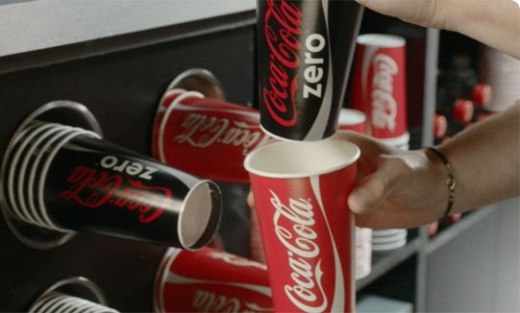A simple, clear article about the history of the 10,000 step target set by many organisations – where did that come from, anyway?
A simple, clear article about the history of the 10,000 step target set by many organisations – where did that come from, anyway?
This is a fantastic comic that hits home – it explains the history of the ‘argument’ you (big-brained you) are having with your subconscious every time you pass the biscuit tin.
Our instincts have served our bodies well for millennia. But they aren’t adapted to this world of plenty and abundance we’ve created. It’s only through reflection- using our conscious, determined mind- that we can rewrite our aims.
I found this comic referenced in an article by Steve Kamb of Nerd Fitness, a fantastic resource for the more geekly-minded. His philosophy is great; he has adapted the terminology and approach of video games (levelling up, for example) to fitness as a whole. Worth a look.
A cheeky dinner out can be costly for your waistline.
Researchers from the University of Toronto examined the calorie, sodium, fat and cholesterol levels of 685 meals and 156 desserts from 19 sit-down restaurants around Canada. They found that the average meal has 1,128 calories. Given the average daily recommended intake for a British woman is 2,000 kcals, that’s over half used up at once.
Even worse, these meals are some of the unhealthiest you can eat. Another recent study looked at fast food in the US for the last 14 years. It showed that the nutritional value of the food available has pretty much remained the same, despite pledges to offer healthy choices.
Food from the companies included – McDonald’s, Burger King, Wendy’s, Taco Bell, KFC), Arby’s, Jack in the Box and Dairy Queen – were analysed and scored against a healthy eating index. In 1997 they scored 45/100. In 2009 that had risen to just 48/100. This was also compared to the average American’s diet, which scores 55/100.
So, food from restaurants is unhealthy and fattening. This isn’t surprising, but it shouldn’t be too worrying either – as long as your other meals are reduced in size accordingly. This is the problem for most of us; if meals out are normal, the other meals creep back up to standard sizes.So this is a Foodswap opportunity If restaurant food – (even a sandwich from Boots or Pret) are regulars in your diet. Reduce your meals-out frequency by bringing a lunchbox to work. Make your date night focus on a home-cooked meal, rather than one at a restaurant or the £10 Tesco deal.
A general focus away from pre-prepared food will help you set your own portion sizes and control your own calorific (and nutritional) inputs, leading to a healthier diet
Yesterday I spoke about the importance of a weight loss target. Today I wanted to expand on how to set one.
Setting a target is one thing – but how do you make sure it’s one that will fit and inspire you?
There’s lots to mock in business-speak, jargon and buzzphrases. However, clichés can still hold some truth. One of these is SMART. This is an acronym for how to make a meaningful target.
I’ve signed up to a 5k run.
I’m not a runner. I don’t particularly like it and I find it very hard to get my trainers on and get out there. Which is exactly why I’ve signed up.
Sometimes, it’s important to have a goal – something to stretch you and make you work towards a result. When you’re losing weight, the first few kilos/pounds are easy to lose, because you’re running away from something – from ‘fat me’.
When you’re getting closer to your target, suddenly it’s much harder as you need to change your motivation to run towards something. And that what I’m doing – literally. I’m running towards my first 5k.
Using the NHS’ 5K podcast, I’ve started the 9-week programme, which will culminate with the Color Run, an untimed run which has its first races in the UK this year. I’m running in London. The sense of fun (you’re blasted with paint at kilometre markers, leaving you looking like those fools above) and the lack of competition (my aim is just to run the whole way, rather than to achieve a certain time) gives me enough flexibility to believe that this is an achievable, realistic target.
Of course, it doesn’t have to be running. Perhaps it’s not going up for seconds at a buffet, or being able to skip up the stairs at the shopping centre without running out of puff. But work on something small and build from there.


Sometimes it’s good to end on a sweet note. Sometimes a coffee won’t cut it.
A sugar-free jelly (Jello) can be a fantastic way to finish a special meal without the calories and carbs of a more traditional pudding.
To go one better, if you’re a low-carb dieter, try replacing a little of the cold water with double-cream instead, to get a rich blancmange instead.
Thinking about exercise can be a bit bewildering, especially if you’ve never even trotted further than the corner shop.
Couch to 5k is designed to get you off your couch, on your feet and out the door with no new equipment – just you, your trainers and your headphones.
Working from just a walk around the block, the programme slowly builds in segments of jogging and then running, minute by minute, until after 9 weeks you are running consistently and eventually for 5 kilometres straight – the ‘5k’ of the title.
If my description sounds unnerving, don’t let it scare you – the three sessions a week are well tailored, increasing almost imperceptibly.
Best of all, it’s cheap or even free. The NHS has funded a podcast, or series of audio files that can be downloaded and used on any media player. It includes instructions and a timed track that bleeps and bloops at you to tell you when to change your pace. There are also smartphone apps that do the same, which have the benefit that you can listen to your own music in the background.
Even if you’ve never attempted any form of exercise since PE at school, Couch to 5K will have you running – properly – in just over 2 months.

It sounds obvious, but if you’re a big soft drink fan, trade over to the no-cal version.
Why am I posting this? Because sugary drinks are linked to 180,000 deaths every year. That means 1% of all obesity-related deaths are down to the soda fountain and the sugarwaters they dispense.
It’s hardly surprising; Just one can of sugary soft drink raises the relative risk of type II diabetes by around a fifth. Wow.
“But LazyFit!” Some of you are asking. “Aren’t diet drinks just as bad for you? They cause cancer and stuff!”
Well, probably not. Diet coke isn’t a saint. There is some evidence that some of the ingredients aren’t great for you – although the quantities involved would be equivalent to drinking 8 to 2,083 cans of diet soda every day.
So should you take up a soft drink habit? Not if you already only drink water. But it’s all a matter of small improvements (almost as if that’s the theme of this blog…). If ‘fat’ soft drinks are your sin, switch to diet versions. If you’re down to diet, consider the occasional fizzy water instead. Your liver, pancreas and waistline will thank you for it.
Are you bewildered by choice? Would you rather just have someone tell you what to do?
We at LazyFit are all about offering different approaches to weight loss and maintenance – we believe that there are small (and large) changes you can make to redesign your lifestyle into a healthy, sustainable approach. But sometimes we can feel the need for some outsider advice.
Tesco Health & Wellbeing is a new site (still in beta or ‘test mode’) from the supermarket Behemoth. Give it your current details and approach and you can select a range of diet approaches, like low GI, ‘Mediterranean’, diabetic support or healthy heart. These can then be tailored to you even more closely with a dizzying range of options from your activity level to your willingness to eat individual foods.
The site then prepares meal plans for you to explore, print, or even order online (naturally).
Once you’ve planned your food, the site then allows you to track how you really get on, both with a comprehensive food diary (with UK/IE nutrient levels) and even a place to record your exercise.
Despite the unwieldy name, it seems to share much of its DNA with its sister site, Tescodiets, with one very important distinction – it’s free.
If you’re just starting out, feel the need for a more focussed approach, or just fancy a change, give it a try – it may inspire you.
![lazy%20cat%20watching%20tv[1]](https://lazyfit.files.wordpress.com/2013/04/lazy20cat20watching20tv1.jpg?w=300&h=286) 18% of people who watch less than two hours of TV a day are obese.
18% of people who watch less than two hours of TV a day are obese.
30% of those who watch more than 4 hours are obese.
Not enough? OK, how’s this:
Overweight participants who cut their daily TV time in half (from an average of 5 hours to 2.5 hours) burned an extra 119 calories a day. And a recent study of people who successfully lost weight found that 63 percent of them watched less than 10 hours of TV a week.
Yikes.
Listen, I love a little telly-time too. So what can you do to improve this? First, make sure you’re posture’s perfect – no slumping like kitty up there. (We’ll talk about this later in the week, too). Second, try some exercises during the advert breaks – yes, that means without fast-forwarding, those with Sky+. I’ve linked to some ideas in the sources, below. Don’t be an armchair athlete – someone who watches sport on the TV but never takes part. If you can ‘earn’ your programmes by paying for it during the breaks, everyone gains – and you still get to watch Sherlock, too.